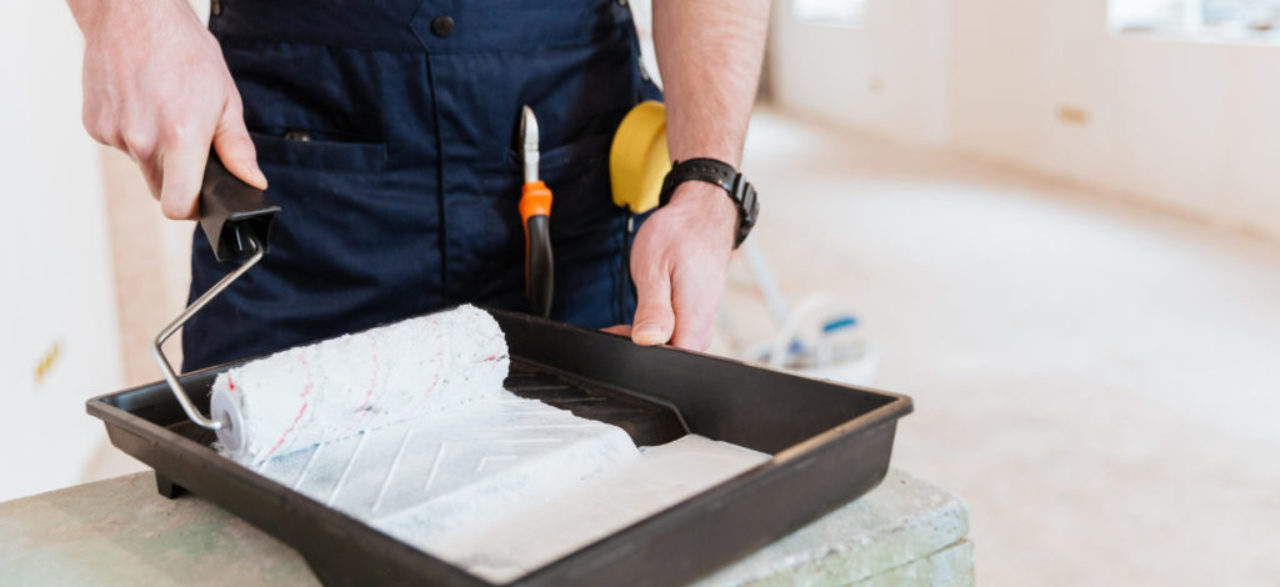What brush or roller should I use?
Are you for example about to paint the walls, ceilings or window frames in your house? It is good to know what brush or roller you should use.

When should you use a brush, and which one to use?
As with a roller, the brush is an indispensable tool when, for instance, painting walls, window frames, starts and radiators. With the help of the following overview, you will instantly know what to use the brush for:
- Block brush: this is the ideal brush for painting walls with a rough structure. The brush makes it possible to quickly and effectively cover large surfaces.
- Verfkwast: Thé brush for painting windows frames, stairs and doors, for instance. They come in many shapes and sizes. When buying a paintbrush, make sure to carefully examine its quality. With cheaper brushes of poorer quality, the hairs are often attached to a plastic piece. With paintbrushes of better quality, the hairs are attached to a metal piece. The hairs of the more expansive brushes are usually made of pig’s bristles. This gives a more beautiful result, and additionally these brushes are easy to clean.
- Radiator brush: for painting hard-to-reach areas, such as your radiator. (Curious how to paint a radiator? Have a look at the blog of our fellow painters at Wijnands Schilderwerken.
When should you use a paint roller, and which roller to choose?
A paint roller is very useful for various painting jobs. We listed the various rollers and its applications for you:
- Fur/fleece paint roller: for painting walls and ceilings. When selecting a fur/fleece paint roller, pay close attention to the pile height (long or short haired). Choose a short pile roller for a sleek and smooth result. The high pile roller is more suitable for rough surfaces because it also covers deeper lying area’s quickly and properly. The anti-splatter variation is ideal for painting your ceiling.
- Foam paint roller: these rollers are used for painting with lacquer paint. Use foam rollers with the slanted side for the best result, in this way you won’t see any overlap.
- Felt paint roller: this roller has a very soft coat and therefor absorbs a lot of paint. This makes the felt roller suitable for painting with water-based paint. A felt roller is also very suitable for solvent-based varnishes, such as turpentine-based paint. So, if you are going to work with, for instance, alkyd paint, then definitely choose a felt paint roller!
- Textured paint roller: combined with textured paint it is thé roller for creating beautiful structures. Perfect for applying structure on your walls, for instance. A textured roller can also be a solution for corridors and stairs.
Tips on how to use brushes and paint rollers
Before you start painting with a new paint roller, make sure to remove loose threads and fluff from the roller by wiping it with tape. In this way you can prevent the loose fluff from nesting in the paintwork later. Wet the roller well before the first use; a dry roller will not absorb a sufficient amount of paint the first time. Also, it is wise to scrub your new paint roller with rough sandpaper previous to using it, as to remove loose hairs.
Why outsource your painting job to our painting company?
It is always profitable to outsource your paint work to someone with the required expertise. This asks for an investment on your end but guarantees that the paintwork will be delivered quickly and carefully. As a professional company we possess the knowledge and experience to paint your home in accordance with your wishes. Call or mail us directly to schedule an appointment.
More news
-

Paintwork and VAT, how does that work?
As with many other services and products, VAT is also paid on paintwork. However, it is not entirely clear to everyone how this works exactly. That is why we would like to explain to you.
-

Maintenance subsidy for monumental buildings
Do you live in a monumental building? Then you are eligible for a subsidy for the maintenance of your home. Not an unnecessary luxury, keeping a historical building in good condition is a lot of work. In this article you read about when you are eligible for a subsidy and which forms of maintenance are subsidized.